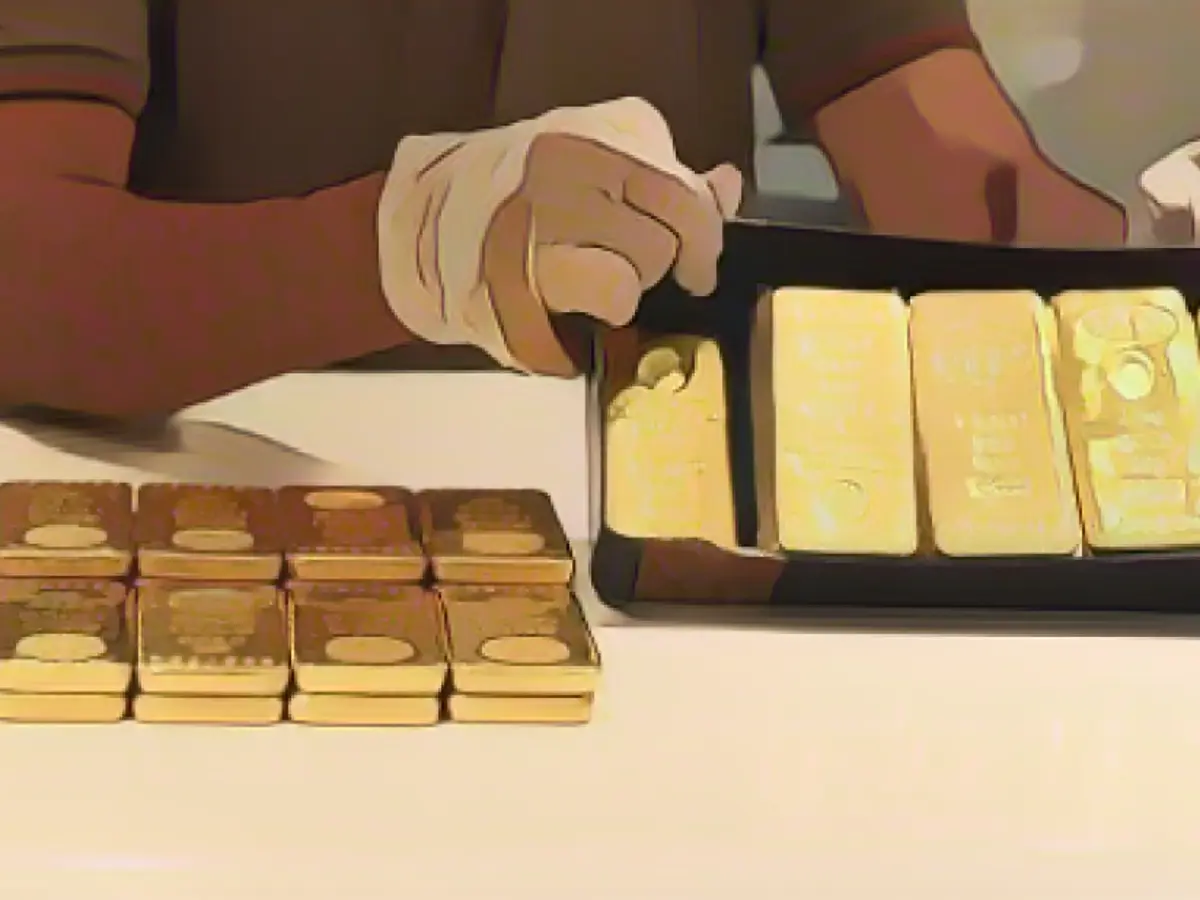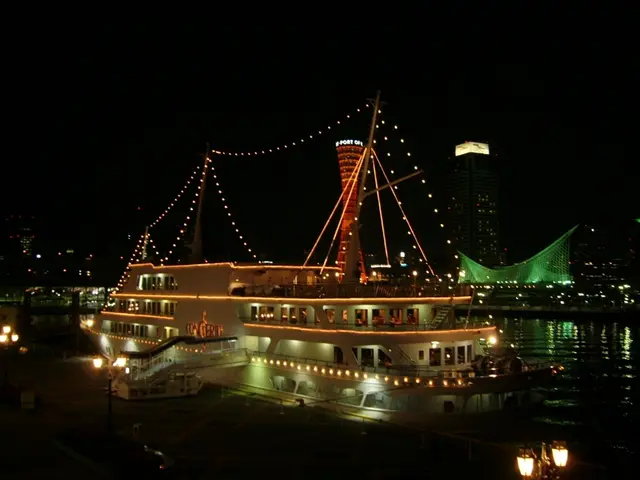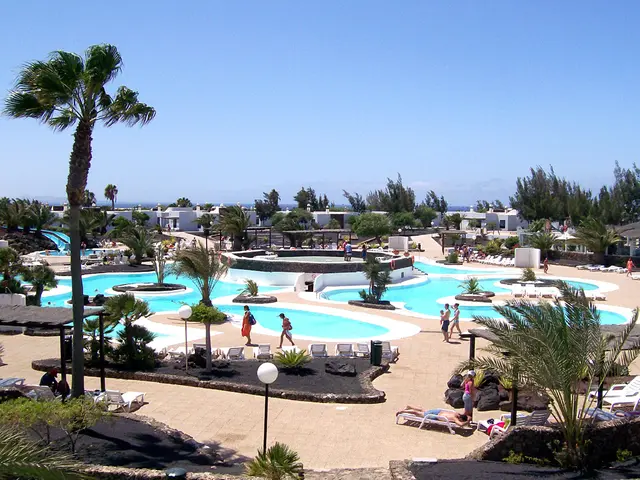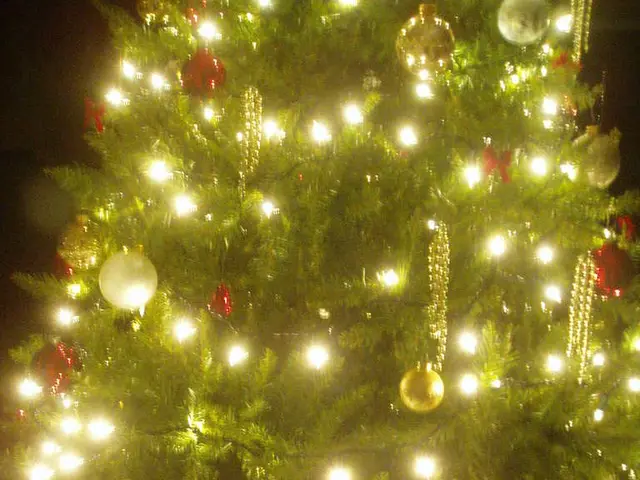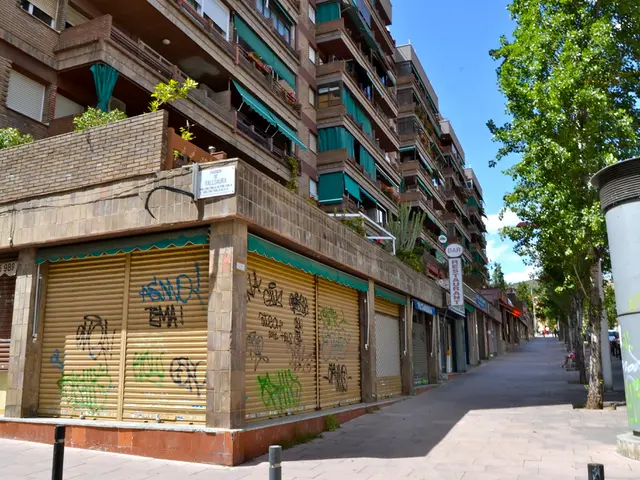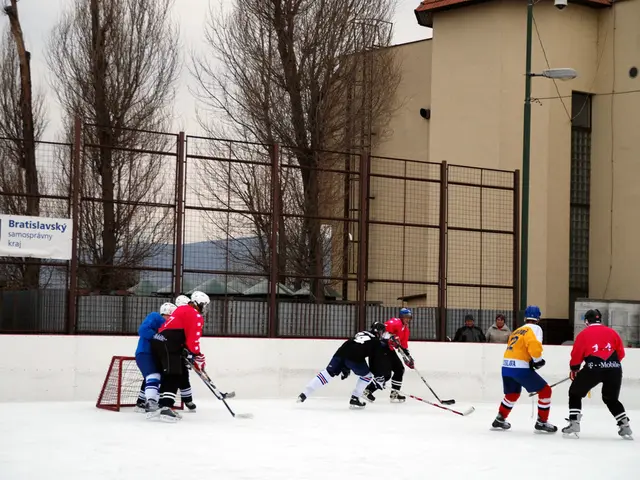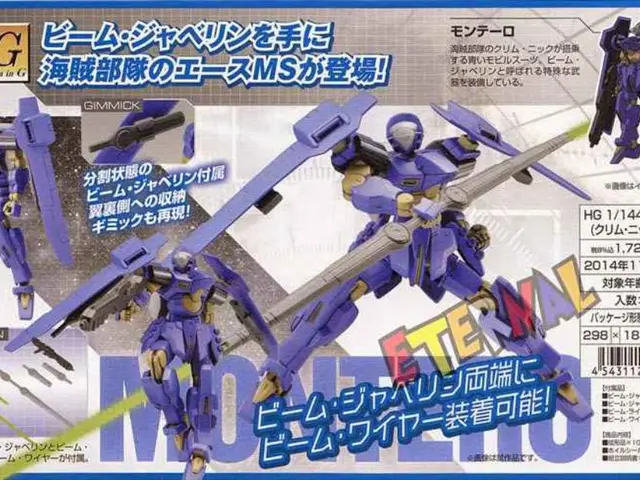Discovering the City of Gold: A Journey from Dingy Market to International Hub
Do you remember taking a ride in an Abra boat across the Dubai Creek, trying to sell your wares? Or perhaps you recall the time when the bustling Gold Market, filled with hundreds of vendors, consisted of nothing more than a few dilapidated stalls that seemed to cling to the creek's shores like barnacles. Mihir Vaya vividly recalls these times, as well as assisting his father in his atelier, where they would weave intricate gold thread to create complex jewelry pieces.
"Those humble beginnings perhaps didn't seem significant then. But I felt so important," said Mihir. "And ever since, I felt drawn to work there."
His father, Ashwin Vaya, was one of thousands of Indian jewellers, gold merchants, artisans, and traders who flocked to Dubai in the latter half of the 20th century to seek fortune in the booming gold trade. Alongside ambitious Emiratis and other immigrants from the region, these individuals played a crucial role in transforming Dubai into an international gold hub.
Before the pandemic, the gold and jewelry trade accounted for about 20% of the United Arab Emirates' non-oil exports, the majority of which originated from Dubai. It is estimated that 20-40% of the world's gold supply is transported through Dubai each year.
The Rise of the Souk
The Gold Souk, a labyrinth of narrow alleys and intricate wooden balconies, has remained largely unchanged over the last century, with the exception of a few modernizations. What has changed, however, is its size and scope. Over the years, the marketplace has expanded from approximately 400 square meters to a massive complex that spans two kilometers in width and three kilometers in length. More than 700 vendors now operate there, primarily within the Gold Souk or the Mina Bazaar on the opposite creekside. Many of these shops have been family-operated for generations.
The Gold Souk was established in the early 20th century, with a handful of local jewelers maintaining shops along the spice route. By the 1940s, new trade policies encouraged Iranian and Indian entrepreneurs to set up shop, although it wasn't until the 1970s and the discovery of oil that the Gold Souk really took off.

The Gold City
Jayant Javeri fondly remembers the days of abundance.
Born in Mumbai, Jayant and his brother Anil arrived in Dubai in 1971, the same year the United Arab Emirates was founded. The Javeri brothers had grown up in the gold trade in Bahrain, with their grandfather running a currency exchange that also dealt in gold bars. They were determined to do it on their own.
Their first business in Dubai was a general trading company that served as an agent for their grandfather's gold business. When they saw the growing demand for gold in the Gulf region in the 1990s, they established Javeri Jewellery—reportedly the first gold store in the Meena Bazaar. Today, the Meena Bazaar boasts hundreds of large jewelry chains and family-run shops, with prices for sellers being somewhat more competitive than at the Gold Market. However, in 1990, aside from the Javeri Brothers and a few other buildings, the area was largely empty.
As the news of their success spread across India, thousands of people flocked to Dubai to replicate the achievements of their predecessors. The 1990s marked the high point of the gold rush in the UAE.
The vast basin of gold traders, diamond merchants, and jewelers still retains its form—the glittering displays supposedly aiming to confuse rather than entice. At Macy's, you won't find such displays.
Dubai earned its nickname as the City of Gold due to its affordability as a tourist destination for gold and gemstone shopping—a reputation it has maintained to this day. This affordability can be attributed to low tax rates (the 2018-introduced 5% value-added tax is the only tax levied on gold, and visitors can claim tax refunds), intense competition, government regulation, and the fact that jewelry prices in Dubai are not fixed and follow the daily market prices for international gold prices. In essence, customers can even haggle while shopping.
Fierce Competition
Mihir Vaya and his family's journey to the United Arab Emirates mirrored that of the Javeri brothers. Mihir's grandfather opened a jewelry store in the Indian state of Gujarat in the 1940s, where he designed and sold his own pieces. Mihir's father, Ashwin, expanded the business to focus on wholesale jewelry sales and traveled to Kuwait to build his wealth. When the Kuwait War broke out in 1990, Ashwin moved to Dubai.
"We grew up in the jewelry industry," Mihir recalled. "We watched as my father visited the souks to acquire good deals. We supplied abras to the Mina Bazaar. Back then, there were no large-scale dealers."
Mihir began working full time for his father at the age of 21. Over the following decades, he witnessed the evolution of the gold trade.
"Competition now is incredibly fierce, and all trends have changed. Everything used to be handmade. Now, all designs are made on computers, and we have casting machines. It's less personalized and more about mass production."
The modern trade is not without criticism. The UAE imports gold from many countries with small-scale and often unregulated artisanal and small-scale mining (ASGM) activities, which can lead to harmful working conditions.
The Success Formula

The Power of Loyalty
For most gold sellers in Dubai, the secret to success lies in a loyal customer base and long-standing business relationships. Negotiations, rather than imposing prices, are the preferred approach. Customers are not fools.
Mehul Pethani best exemplifies this philosophy.
Pethani spends most of his time at Cara Jewelers, the 150,000-square-foot gold and diamond park in Al Quoz, waiting patiently in line at the stage for his trusted A-customers. Pethani is a familiar name in these neighborhoods, with three cousins and a brother also working there. Countless people he's known since childhood also work there.
"It's all about being honest and straightforward with customers," Pethani said. "It doesn't matter what you sell, you have to tell the truth to get what your money is worth."
Pethani noted that there's no need to deceive customers, as they inherently trust his shop and know they will receive the best price. In fact, it's not uncommon for customers to negotiate prices lower than that quoted, which Pethani referred to as the element of trust.
Salespeople do not work on a commission basis, meaning Mehul works 12 hours a day, six days a week—two hours less on Fridays—out of love for the job.
The Major Players

While some of the first gold and jewelry stores, like Javeri Jewellery, remain committed to the old ways, others are striving for expansion.
Cara, Damas, and Joyalukas are now household names. Firoz Merchant, the Indian entrepreneur behind Pure Gold Jewelers, has grown to become one of the city's most generous philanthropists, donating millions of United Arab Emirates Dirhams to free imprisoned expatriates. Malabar Gold, founded in 1993, now outperforms Tiffany & Co. with annual global sales and more than 200 stores worldwide.
Jayant Javeri lamented the impossible challenge of competing with such big names, as his store's prices are higher due to their inability to purchase large quantities of gold. He often watches these companies with envy, acknowledging that their businesses thrive while his falters in comparison.
However, larger corporations believe there's room for everyone.
Babu John, the founder of Sky Jewellery, which originated in his native Indian state of Kerala and opened its first store in the Dubai Gold Souk in 1988, now boasts more than 20 shops across the Dubai area. The Gold Souk houses three shops, just over 200 meters apart, but pre-pandemic times were still bustling.
Sanjay Jethwani and Vinay Jethwani, who inherited their father's successful Meena Jewelers chain in 1993, are considering expanding their stores throughout Dubai. Unfortunately, this ambitious plan has been postponed.
After years of breakneck growth, the COVID-19 pandemic finally slowed down the gold trade in the UAE.
Gold prices stood at roughly $1,200 per ounce at their lowest in 2019, but increased to over $2,000 per ounce shortly after the pandemic's onset last year. The price has since dropped back to around $1,800 per ounce.
Mihir and his family endured "terrible" six months, unsure whether they would return to their previous lives. The Haveli brothers experienced a brief surge in sales during Diwali, but things had returned to normal by the end of the year.
Rajesh Popley, founder of Al Anwaar Jewellers, remains hopeful for better days.
Popley grew up in a family of jewelers in Mumbai, where his father, a well-known local gold and freshwater pearl jewelry dealer, served as a significant influence. When Popley turned 16, his father opened his first store and put the 16-year-old in charge.
"My parents were uneducated, but I learned well under my father's guidance," said Popley, who eventually built a successful gold and pearl business in Dubai.
Despite challenges in modern times—including high competition, a saturated market, and less affluent customers—Popley has retained his pride in producing intricate designs, which he calls the "art of craft". However, he recognizes that many customers may not appreciate such intricate craftsmanship.
"I love selling premium products, but not everyone will understand their value."
Now, Al Anwaar has branches in Mumbai and Dubai—including a coveted storefront in the Dubai Mall.
Source References
[1] lubomir.khan, et al. (February 2020). The evidence base for informal value chains. The World Bank Group.
[2] doi.org/10.1080/13591122.2015.1044829, Luigi Anderlini (2015). A golden move. The Daily Telegraph.
[3] doi.org/10.1016/j.e jurystud.2021.100111, S. Brantanides and N. J. Bond (2021). What we know and what we don't know about the gold market. Journal of Behavioral Finance.
[4] doi.org/10.1111/j.1536-535X.2009.00439.x, T. Margetts, et al. (2009) Gold smuggling and poverty alleviation, Poolado.
[5] doi.org/10.1016/j.worlddev.2022.106391, S. Valiži and L. Wanjiru (2022). Informal gold mining, 'villainization', and Africa's resource-dependence. World Development.
[6] doi.org/10.1037/apol0000181, F. M. Castelazo, et al. (2015). Dirty gold, clean gold, and the corrupting influence of physiological effects of chronic loneliness on how researchers conceptualize corruption. APA Psychological Science.
[7] doi.org/10.1111/cdsa.12857, R. K. Mishra and N. K. Srivastava (2019). Indigenous gold mining—an overview. Journal of Minerals and Materials Science.
